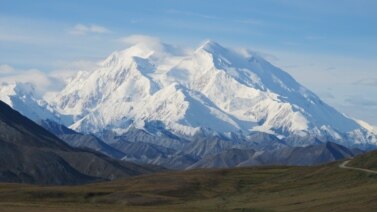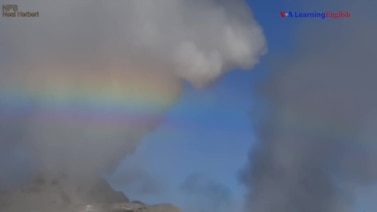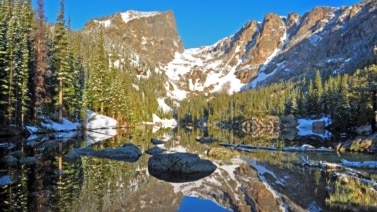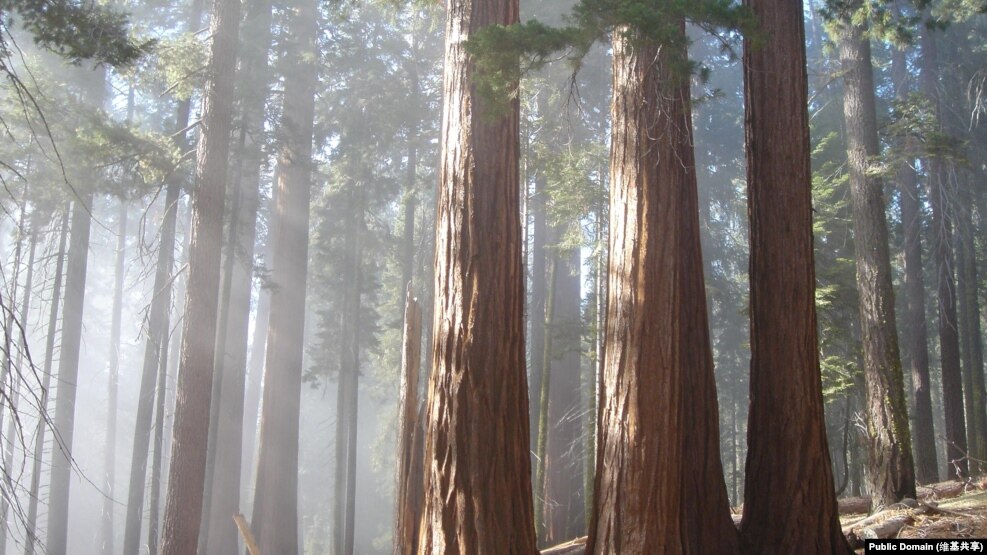
This week on our national parks journey, we visit a land of giants, high up in California's Sierra Nevada mountains.
Here you will find the largest living things on Earth, as well as the tallest mountain in the continental United States. You will also find the deepest canyon in America.
Welcome to Sequoia and Kings Canyon National Park!
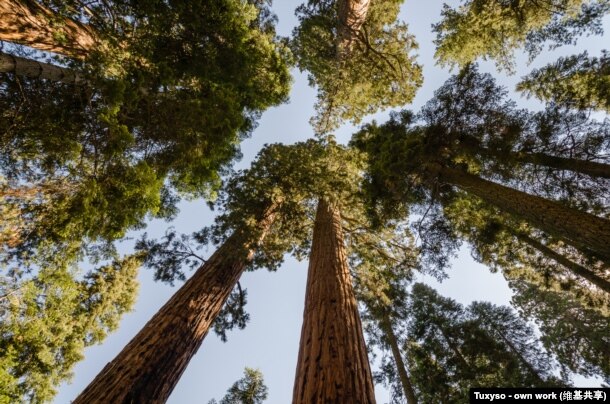
The park gets its name from the area's ancient sequoia trees. They are among the oldest trees on the planet. Millions of years ago, different kinds of sequoias grew in many different places. Only two kinds exist today -- the redwood and the giant sequoia. Both are found in California.
Redwoods are taller, but the trunks of giant sequoias are much bigger.
Sequoia National Park's forests are thick with giant sequoias. Many of the trees are several thousand years old.
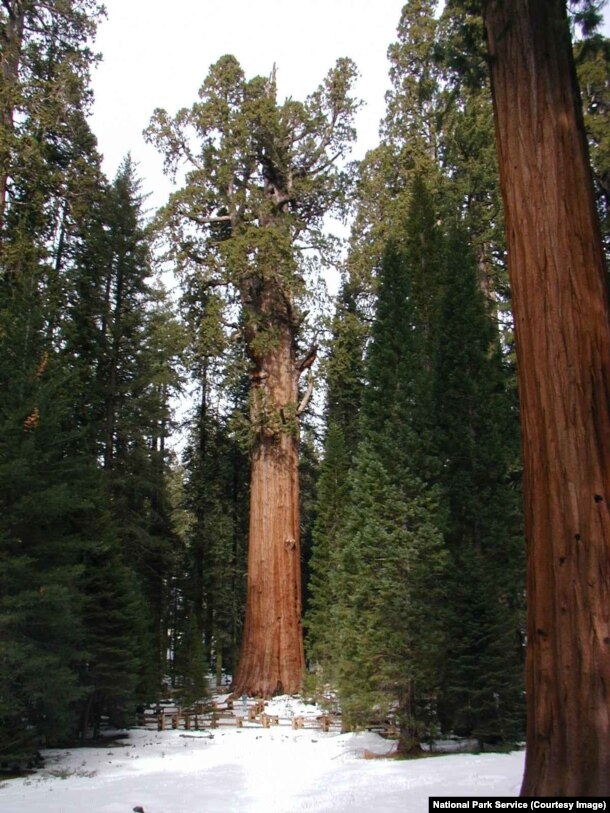
The largest is called General Sherman. It is named after a U.S. general in the civil war, William Tecumseh Sherman. The tree is 31 meters around. It stands almost 84 meters tall. And, it continues to grow. It sits within the park's Giant Forest. The forest is home to over 8,000 sequoia trees.
General Sherman is more than 2,200 years old. It is the world's largest tree in terms of the amount of wood it contains. The National Park Service says if the tree were cut down it would provide a huge amount of wood construction planks. It says if they were laid end-to-end, they would stretch for almost 200 kilometers.
Protecting the sequoias
In the late 1800s, people grew concerned about logging activity in the area. They sought to protect the giant sequoias from being cut down for wood.
One of those people was Walter Fry. In 1888, he came to the Sierra Nevada Mountains as a logger himself. He spent five days with a team of loggers trying to take down a single giant sequoia tree. Fry then decided to count the tree's rings to learn its age.
The answer shocked and saddened him. The tree they had cut down was more than 3,200 years old. He and his team of loggers had ended thousands of years of growth.
The experience led Fry to change jobs. He became a naturalist. He studied the trees and measured the size of fallen sequoias. He also joined the fight to protect them from future loggers.
When a petition was created to urge Congress to create a national park in the area, Fry was the third person to sign it.
Sequoia National Park was established on September 25, 1890.
It became the country's second national park, after Yellowstone.
In 1940, Congress established another park neat Sequoia: Kings Canyon. It and Sequoia National Park have been managed together since 1943.
Kings Canyon is home to the deepest canyon in the United States as well as a famous sequoia forest called Grant Grove. Here you will find the world's second-biggest tree, the General Grant tree. It is over 3,000 years old.
Beyond the trees
Along with the world's biggest trees, the area is also home to one of America's highest peaks: Mount Whitney. It measures 4,414 meters. It lies in the eastern part Sequoia National Park.
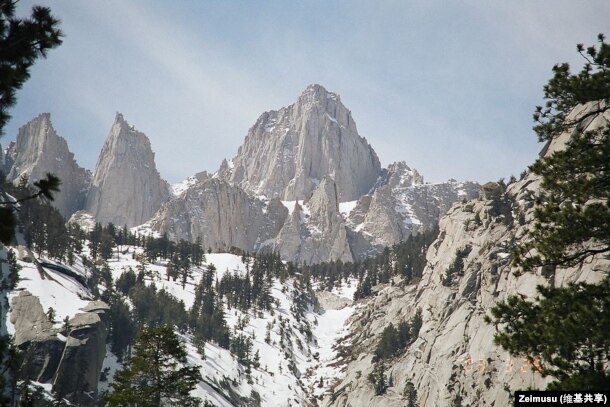
While many visitors travel here to witness the giant sequoias, some visitors come here to climb Mount Whitney.
The climbing trail itself begins at an elevation of over 2,400 meters, already very high for some people. Many hikers experience altitude sickness while trying to reach the top.
More than 30,000 people try to climb Mount Whitney each year. Only about 10,000 reach the top.
Of course, the park offers less extreme hikes, as well. One of the most popular is the Moro Rock trail.
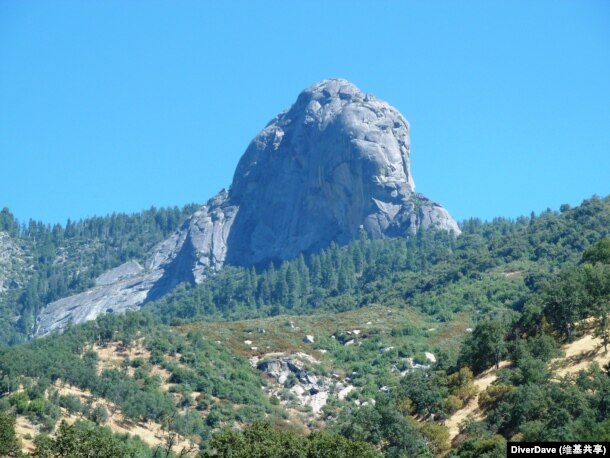
Moro Rock itself rises more than 2,000 meters. But hikers only need to climb the final 90 meters to reach the top. From there, they are rewarded with stunning views -- the towering Sierra Nevada mountains and kilometers of giant sequoia forests. Climbers are also get a view of the 90-kilometer-long Kaweah River, which runs through a deep canyon.
Sequoia and Kings Canyon National Park is a home to a richly diverse animal world. More than 300 species of wildlife live in the park.

Mammals include the tiny white-footed mouse, the grey fox and the bobcat. Black bears are also common. Bird species include the California quail, the Northern Owl and the acorn woodpecker.
There are also many animals that swim, slither, hop or crawl. Visitors might see a Northern Pacific tree frog, a western pond turtle, or the colorful rainbow trout. If you are lucky, you will not run into one of the park's poisonous wild rattlesnakes.
But do not let bears and snakes scare you away. Sequoia and Kings Canyon National Park is too extraordinary to miss. The words of the late naturalist John Muir perfectly describe a visit to this great park: “Nature's peace will flow into you as sunshine flows into trees.”
I'm Caty Weaver.
And I'm Ashley Thompson.
Ashley Thompson wrote this report with materials from the National Park Service and the VOA Learning English archives. Caty Weaver was the editor.
Words in This Story
giant - n. a person or thing that is very large
trunk - n. the thick main stem of a tree
plank - n. a long, thick board that is used especially in building something
logging - n. the act of cutting down trees in an area for wood
petition - n. a written document that people sign to show that they want a person or organization to do or change something
